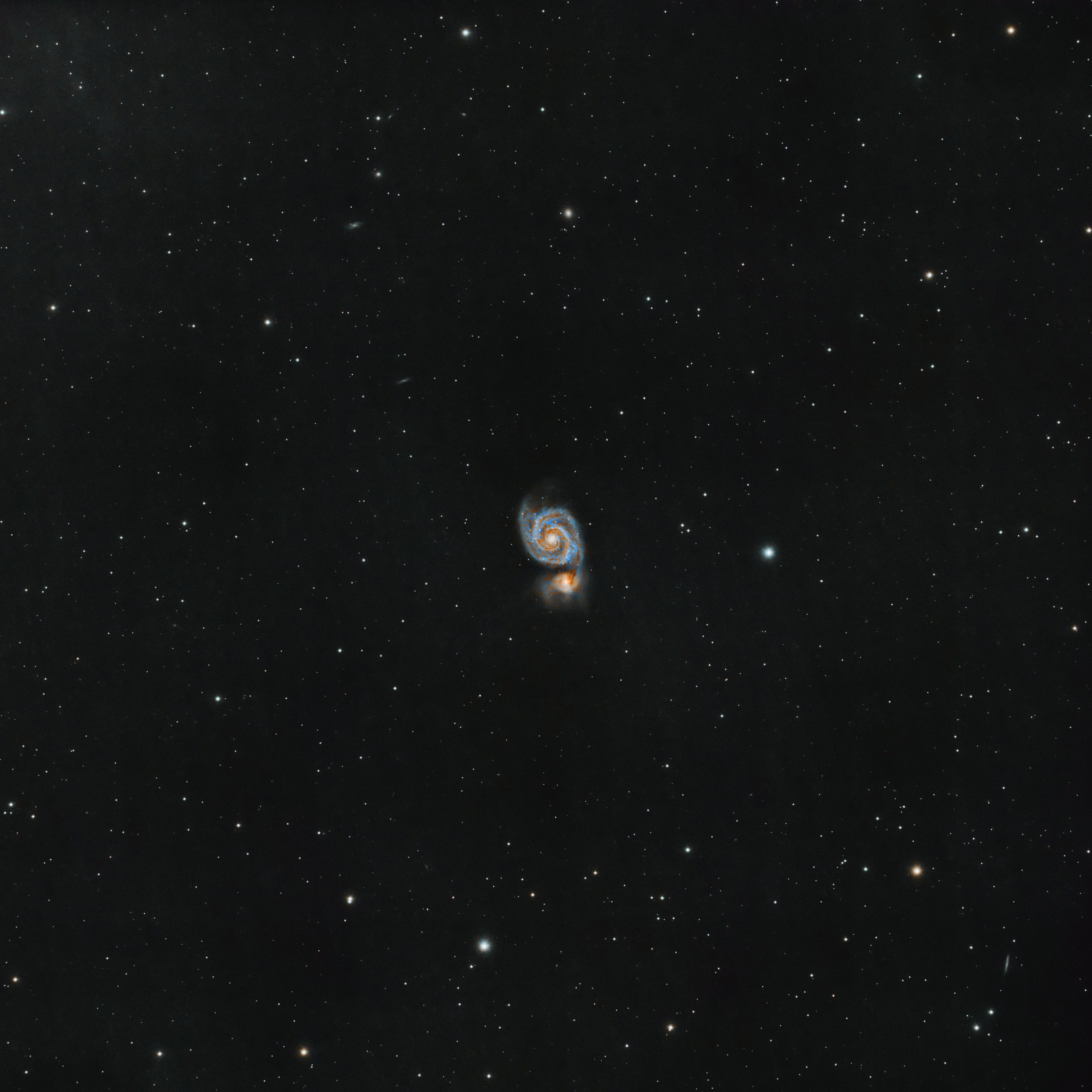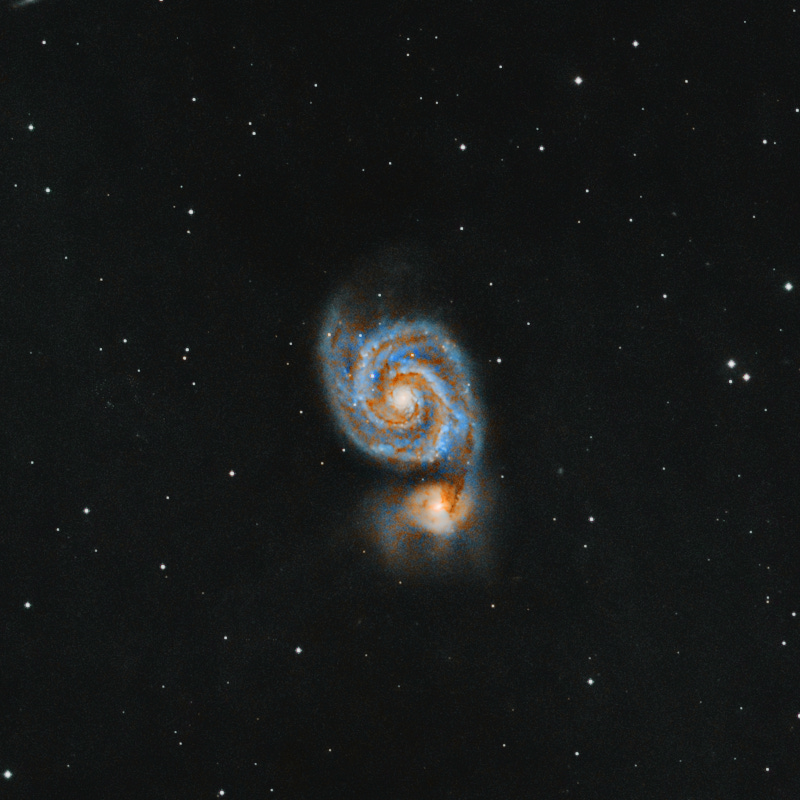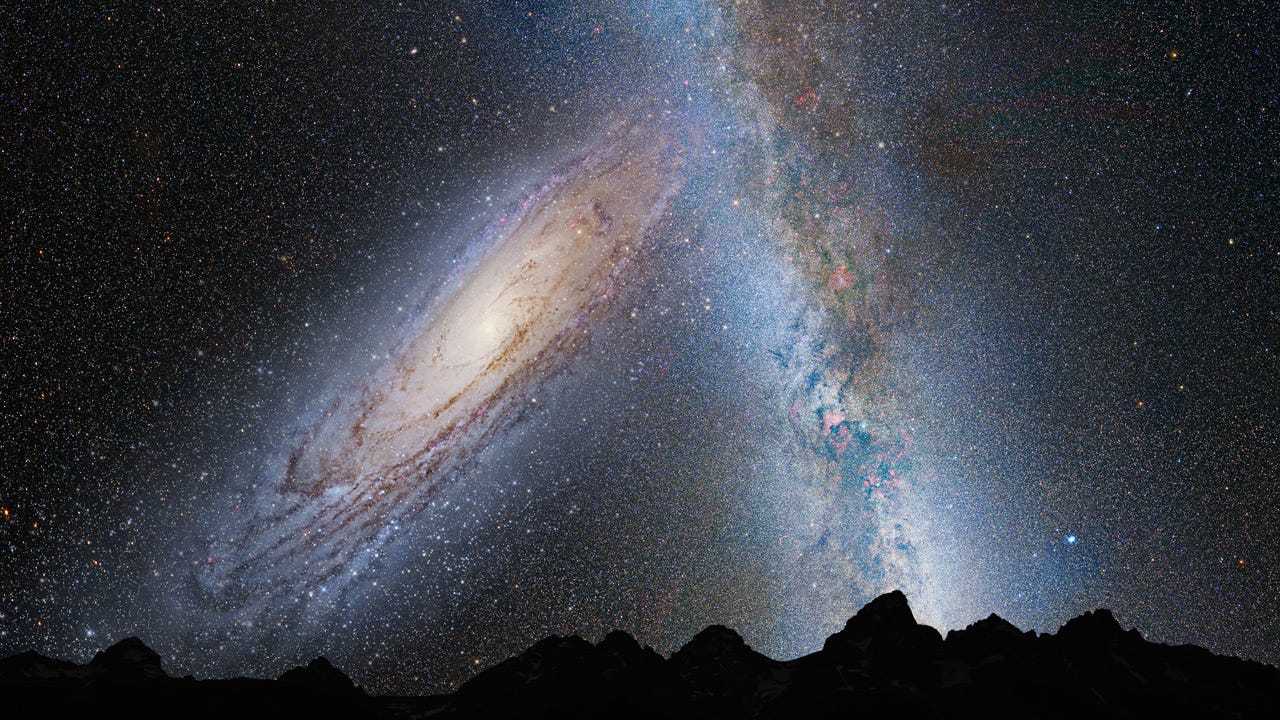First things first, the image:

The Whirlpool Galaxy
The Whirlpool Galaxy is a galaxy roughly 30 million light years away from our solar system. It is a spiral galaxy in which two tails composed of dust, gas, stars, and planets are swirled around a core that contains a supermassive black hole. The Whirlpool Galaxy is ~60 thousand light years in diameter or about half the size of the Milky Way. The blue color in the spiral arms is from younger, hotter stars and the yellow color is from older, cooler stars. You might also notice some bonus galaxies in the background, to the top left and the far bottom right of the Whirlpool.
The glowing orb that appears at the bottom of one of the tails is actually a second, “dwarf” galaxy NGC 5195 (the name could use a bit of branding work). The dwarf galaxy is caught in a gravitational interaction with the Whirlpool Galaxy and has helped accentuate the spiralization which gives the Whirlpool its name. As the two tails spin around the black hole, the drag of the dwarf galaxy pulls on one of the tails. To spark your imagination of this effect: imagine twirling a stick with two ropes attached to the end vs. twirling the same stick except one of the ropes has a weight tied to the other end of it.
The two galaxies are in the process of merging, and in the process, the larger Whirpool Galaxy is taking materials from the smaller dwarf galaxy to form new stars. The Milky Way is also in the very early stages of a similar collision with our nearest galactic neighbor, the Andromeda Galaxy. Andromeda is currently moving toward the Milky Way at a speed of 70 miles per second. That sounds fast, but it is still 2.5 million light-years away, so the two galaxies won’t merge for 4 billion years. This is a view released by NASA of what the night sky could look like several billion years from now as the galaxies get closer. Cool!
The Image
I captured the data for this image over two nights in May. I have found galaxies to be the hardest type of astrophotography target I have attempted thus far because their light spans the full electromagnetic spectrum. The nebulae I have imaged are made up primarily of a few types of gas which emit or reflect light in relatively small bands on the spectrum, so I can use a filter that blocks out most wavelengths except for those. In contrast, galaxies are made up mostly of stars that have full spectrum light, just like the light from our own star, the Sun. That means any filter I use to cut out light pollution will also cut out data from the galaxy as well - quite the conundrum!
I’ve tried a few galaxies with no filter at all, but all the light pollution very quickly blows out the longer exposure needed to capture the finer details. I tried a new approach this time and used a less aggressive filter than the one I use for my nebulae images. This filter is designed to pass through more of the true colors of stars, and even though it still cuts out some of the data and color from the galaxy, I’m pretty happy with the detail I was able to pull out this time.
You may have noticed that the galaxy is relatively small in the main image. The galaxy itself isn’t small, it’s actually very, very big, it’s just far away relative to objects in our own galaxy. Astrophotography telescopes have a fixed “field of view”, meaning the portion of the sky that the telescope can capture. This is functionally the same thing as zoom on a normal camera. The telescope I use has a fairly wide field of view (technical term- “wide field”) to capture big nebulae and similar objects, but that means smaller / further away objects are going to look small through its lens.
I’d love to play around with a smaller field of view telescope at some point to get those really distant objects, but I think that’s a down the road project for now. Somewhat surprisingly, the targets that require the most zoom are planets in our own solar system, because even though they are so close, they are so much smaller than nebulae, galaxies, and other deep space objects. That really gives you a sense of scale.
Thanks for reading, and here’s the final image one more time.







Amazing images, Kristian. Am learning so much!